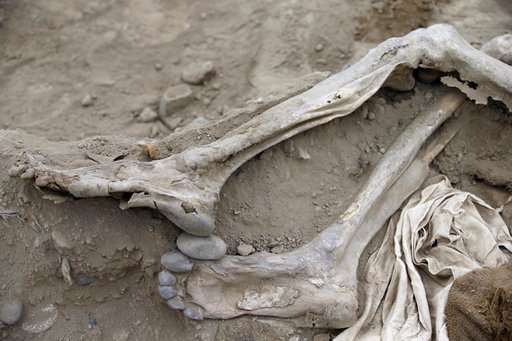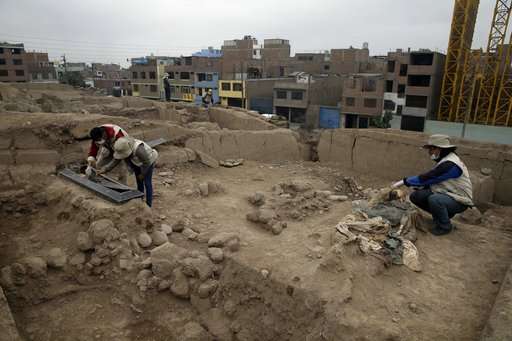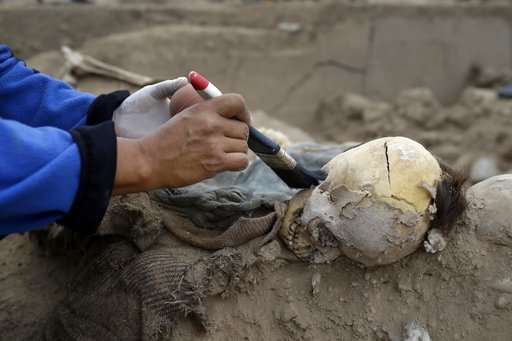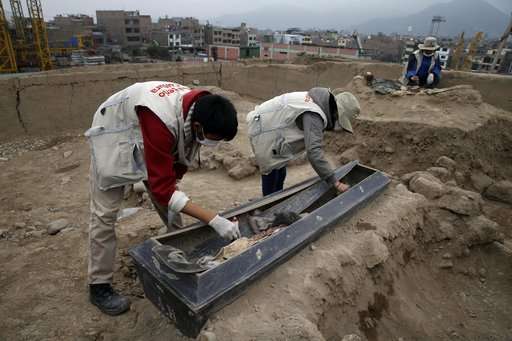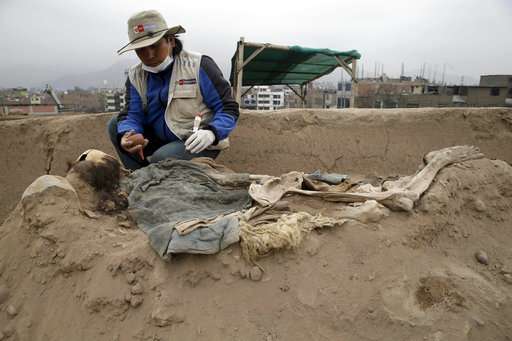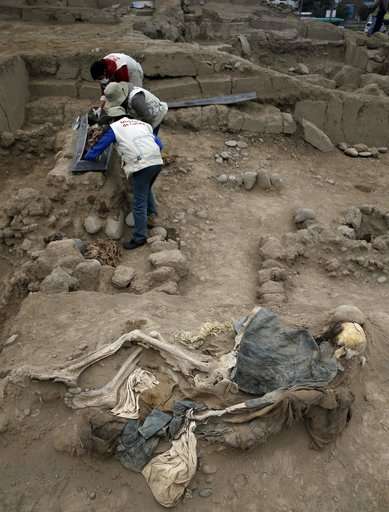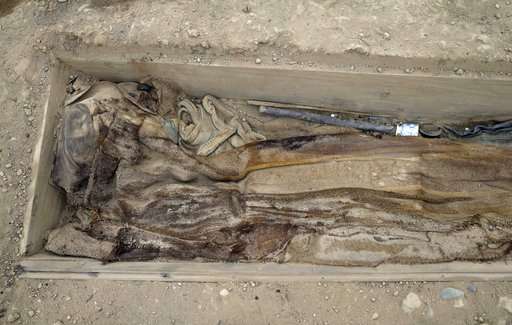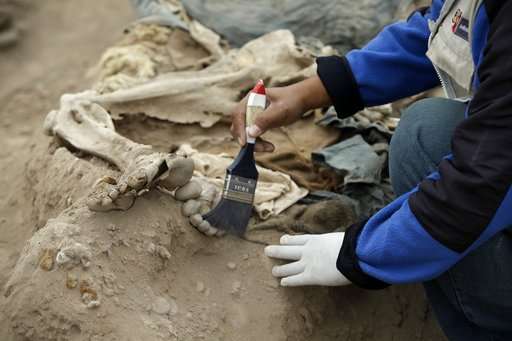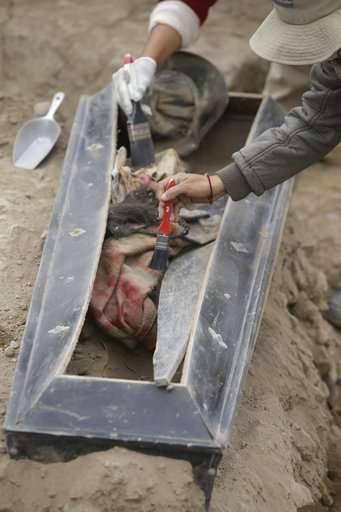The remains of one of the recently discovered 19th century Chinese immigrants lies at Huaca Bellavista in Lima, Peru, Thursday, Aug. 24, 2107. According to the Ministry of Culture of Peru, the tombs where located in a pre-Inca sacred site because Chinese immigrants could not be buried in the Catholic cemeteries of the time. (AP Photo/Martin Mejia)
Peruvian archeologists have discovered in a sacred pre-Incan site the bodies of 16 men from China who arrived to South America almost two centuries ago as semi-enslaved workers.
The secret tomb in Lima is the biggest burial site of Chinese migrants ever found in Peru and was presented Thursday to journalists. Found alongside the bony remains were opium pipes and other personal objects used by the migrants.
As many as 100,000 Chinese migrants arrived to Peru in the second half of the 19th century and for little pay performed back-breaking work on farms, building railroads and removing guano, which is bird excrement coveted as fertilizer.
The Chinese were discriminated against even in death, having to be buried in the pre-Incan sites after being barred from cemeteries reserved for Roman Catholics.
-
Archeologists work at the site where 16 tombs belonging to 19th century Chinese immigrants were discovered, at Huaca Bellavista in Lima, Peru, Thursday, Aug. 24, 2107. According to the Ministry of Culture of Peru, the tombs where located in a pre-Inca sacred site because Chinese immigrants could not be buried in the Catholic cemeteries of the time. (AP Photo/Martin Mejia)
-
An archeologist works at the site where 16 tombs belonging to 19th century Chinese immigrants were discovered, at Huaca Bellavista in Lima, Peru, Thursday, Aug. 24, 2107. According to the Ministry of Culture of Peru, the tombs where located in a pre-Inca sacred site because Chinese immigrants could not be buried in the Catholic cemeteries of the time. (AP Photo/Martin Mejia)
-
Archeologists work at the site where 16 tombs belonging to 19th century Chinese immigrants were discovered, at Huaca Bellavista in Lima, Peru, Thursday, Aug. 24, 2107. According to the Ministry of Culture of Peru, the tombs where located in a pre-Inca sacred site because Chinese immigrants could not be buried in the Catholic cemeteries of the time. (AP Photo/Martin Mejia)
-
An archeologist works at the site where 16 tombs belonging to 19th century Chinese immigrants were discovered, at Huaca Bellavista in Lima, Peru, Thursday, Aug. 24, 2107. According to the Ministry of Culture of Peru, the tombs where located in a pre-Inca sacred site because Chinese immigrants could not be buried in the Catholic cemeteries of the time. (AP Photo/Martin Mejia)
-
Archeologists work at the site where 16 tombs belonging to 19th century Chinese immigrants were discovered, at Huaca Bellavista in Lima, Peru, Thursday, Aug. 24, 2107. According to the Ministry of Culture of Peru, the tombs where located in a pre-Inca sacred site because Chinese immigrants could not be buried in the Catholic cemeteries of the time. (AP Photo/Martin Mejia)
-
An opium pipe sits next to the remains of one of the 19th century Chinese immigrants recently discovered at Huaca Bellavista in Lima, Peru, Thursday, Aug. 24, 2107. According to the Ministry of Culture of Peru, the tombs where located in a pre-Inca sacred site because Chinese immigrants could not be buried in the Catholic cemeteries of the time. (AP Photo/Martin Mejia)
-
An archeologist works at the site where 16 tombs belonging to 19th century Chinese immigrants were discovered, at Huaca Bellavista in Lima, Peru, Thursday, Aug. 24, 2107. According to the Ministry of Culture of Peru, the tombs where located in a pre-Inca sacred site because Chinese immigrants could not be buried in the Catholic cemeteries of the time. (AP Photo/Martin Mejia)
-
An archeologist works at the site where 16 tombs belonging to 19th century Chinese immigrants were discovered, at Huaca Bellavista in Lima, Peru, Thursday, Aug. 24, 2107. According to the Ministry of Culture of Peru, the tombs where located in a pre-Inca sacred site because Chinese immigrants could not be buried in the Catholic cemeteries of the time. (AP Photo/Martin Mejia)
© 2017 The Associated Press. All rights reserved.
